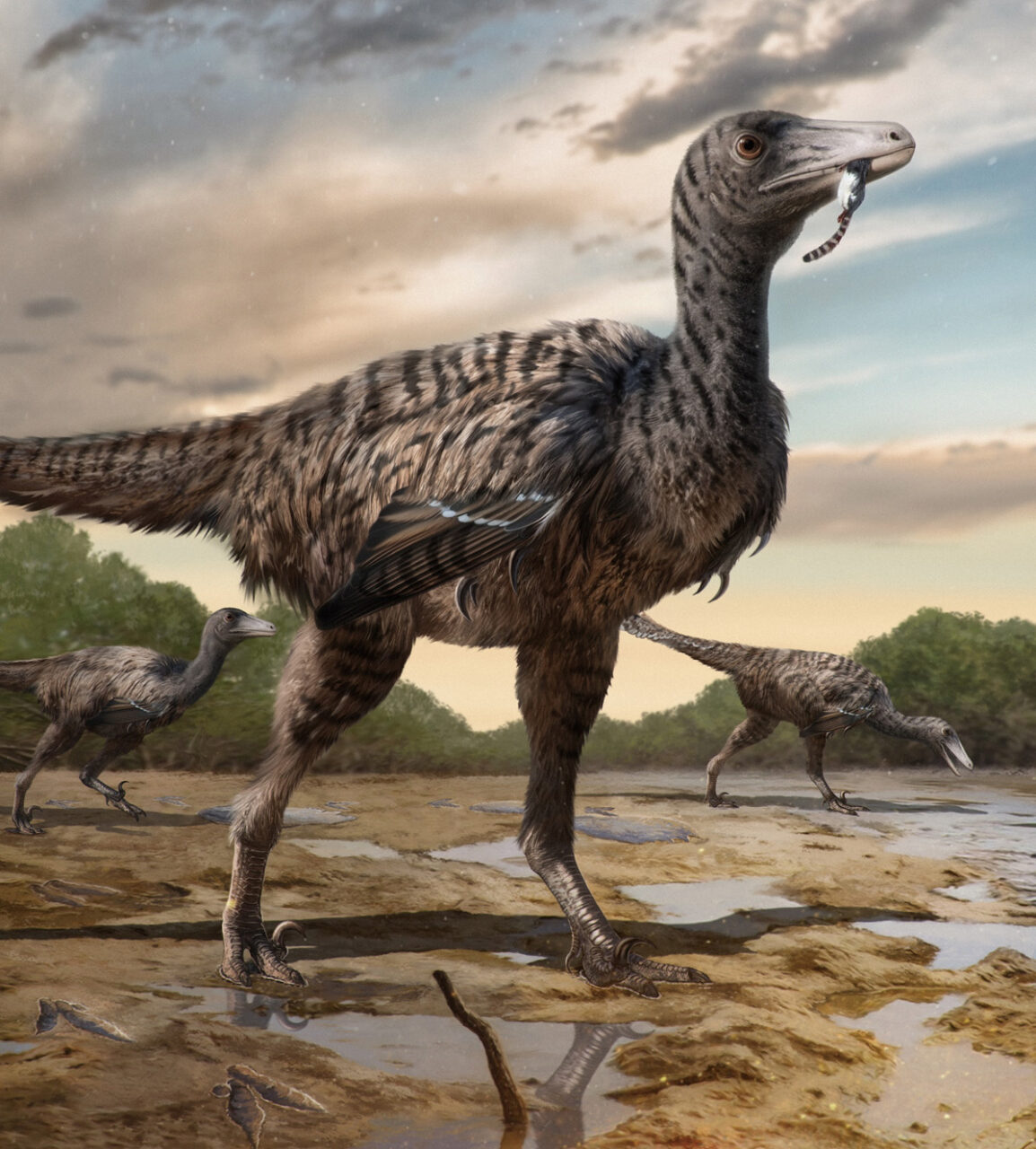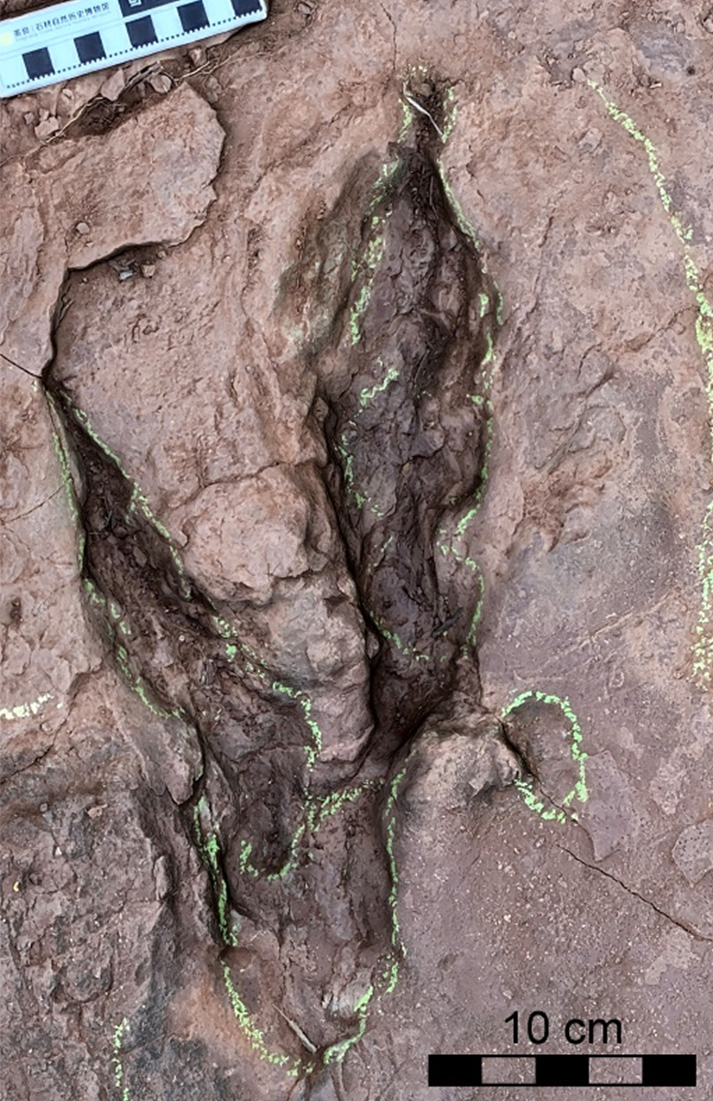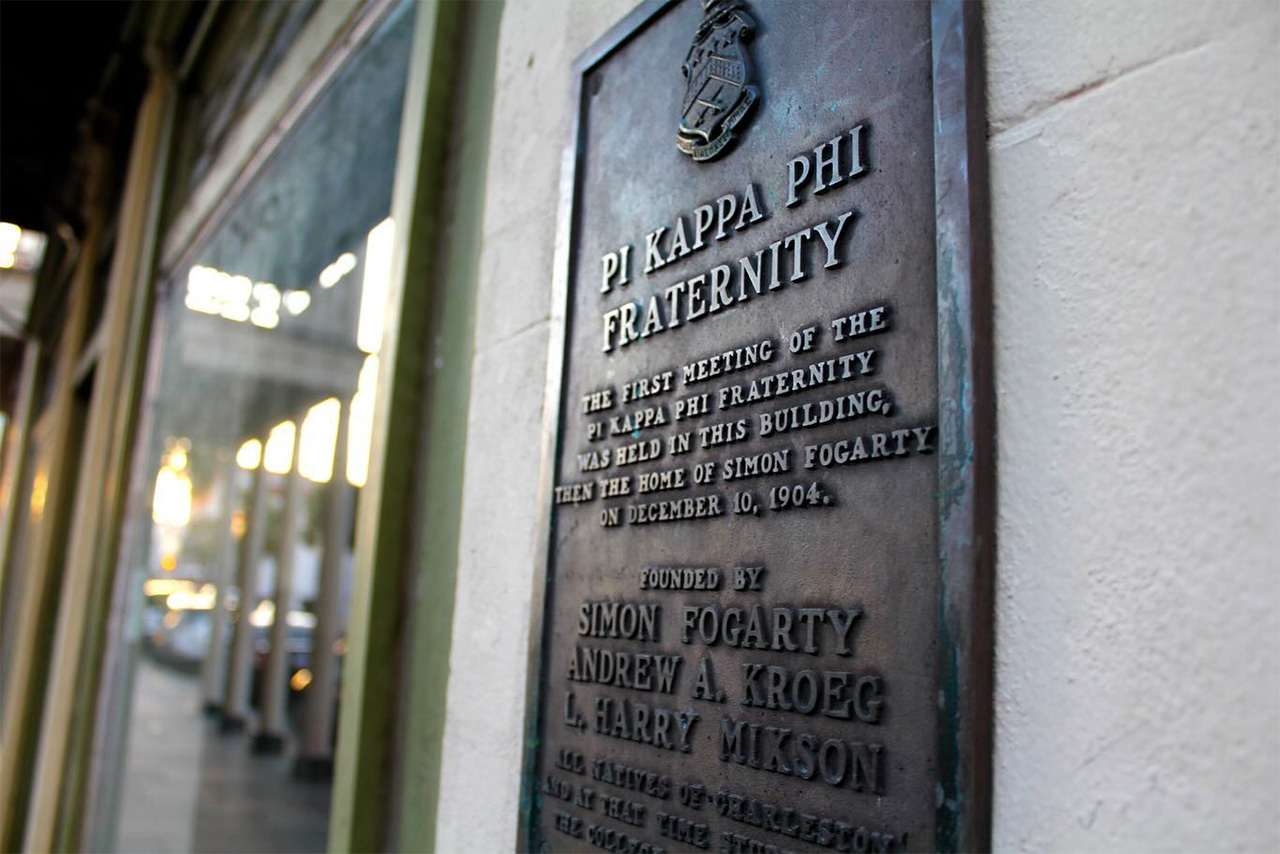College of Charleston Paleontologist Tracks Giant Raptor's Path
Scott Persons' new raptor track study was published in the peer-reviewed journal 'iScience' on April 24, 2024.

Not all dinosaurs are known from bones. Some mysterious species are identified only from their footprints. In the Fujian Province of southeastern China, an international research team has identified fossil tracks that don’t match the feet of any previously discovered dinosaur. A series of five footprints record an animal’s path across what was the muddy edge of a river, approximately 90 million years ago. That the tracks belong to a carnivore is clear from the sharp claw marks at the end of each toe impression. Unusually, there are only two toe impressions per track.
“Most carnivorous dinosaurs leave footprints that look like big chicken scratch,” explains Scott Persons, assistant professor of paleontology at the College of Charleston and a member of the research team behind the discovery. “The typical carnivorous dinosaur track has three forward-pointing toes. Their tracks look like they could have been made by a giant turkey, emu or other ground bird. Two-toed tracks are the mark of deinonychosaurs, better known as raptors.”
Raptors, including the velociraptors of Jurassic Park fame, did have three forward-pointing toes, but uniquely held each foot’s inside toe up and off the ground.
“Holding the big toe up,” says Persons, “kept that toe’s enlarged and recurved claw from getting dulled as the animal walked. Consequently, it stayed lethally sharp.”

The raised position also kept the toe from leaving an imprint in most fossil raptor tracks. The tracks are different from any that have ever been found.
One of the differences is size. In real life, Velociraptor was a dinosaur the size of a Labrador retriever. Most raptors were similar and many were smaller. Each of the new Chinese raptor tracks measures over 13 inches long, making them the largest raptor footprints ever found. Based on that foot size, the research team estimates the track maker to have stood roughly five feet at the hip and to have been around 15 feet long. The new giant raptor has been named Fujianipus, meaning “the foot of Fujian.”
Based on the proportions of the toes (specifically the outer toe of each foot being much shorter relative to the middle toe), the researchers think Fujianipus belongs to a special family of raptors known as troodontids. That familial relation is surprising, because the only other known really big troodontids lived in prehistoric Alaska.
“Raptors were good at being small,” says Persons. “When it comes to house cat– and coyote–sized predators, raptors were widespread and globally successful for tens of millions of years. But we find that, in multiple environments and at multiple times, different raptor lineages did evolve large sizes. There are many advantages to getting bigger. Still, for Fujianipus, the timing is interesting.”
The researchers note that the age of the big raptor tracks corresponds to a point in dinosaur history when another Asian group of small-bodied predators was also evolving bigger size: tyrannosauroids. That group would eventually spread out and give rise to one of the all-time biggest dinosaur predators – Tyrannosaurus rex. For now, paleontologists don’t know if tyrannosauroids and Fujianipus outcompeted the older and slower carnivores or if they were simply evolving to fill the ecological roles left empty as older types of big preadtors died out. It’s also unclear exactly why the tyrannosauroids kept getting bigger and the raptors did not.
The new raptor track study was published in the peer-reviewed journal iScience on April 24, 2024.



